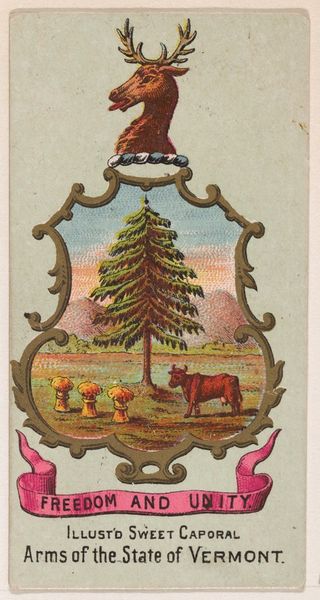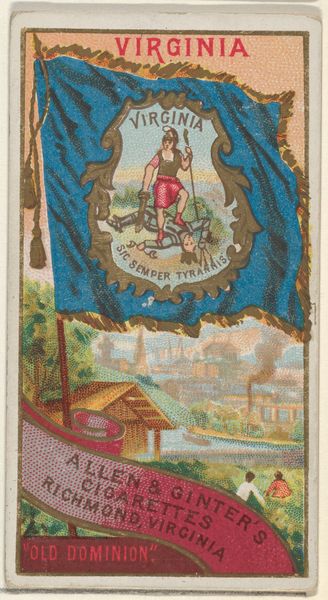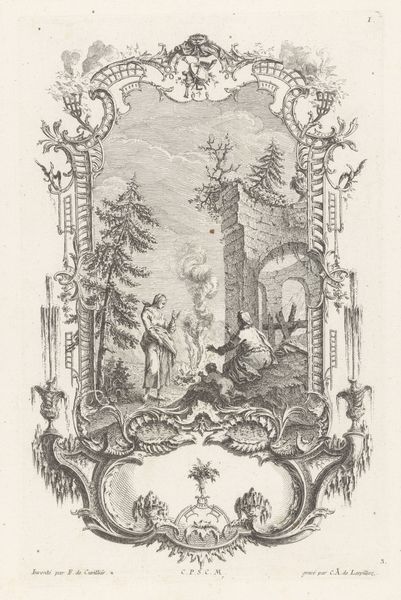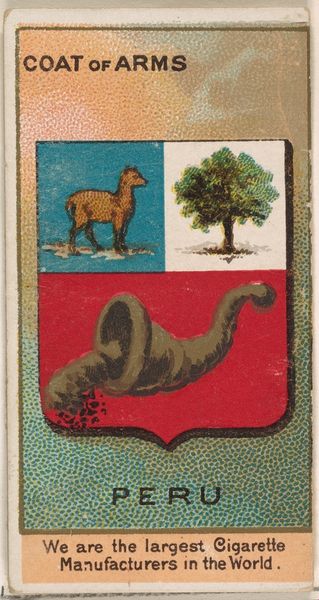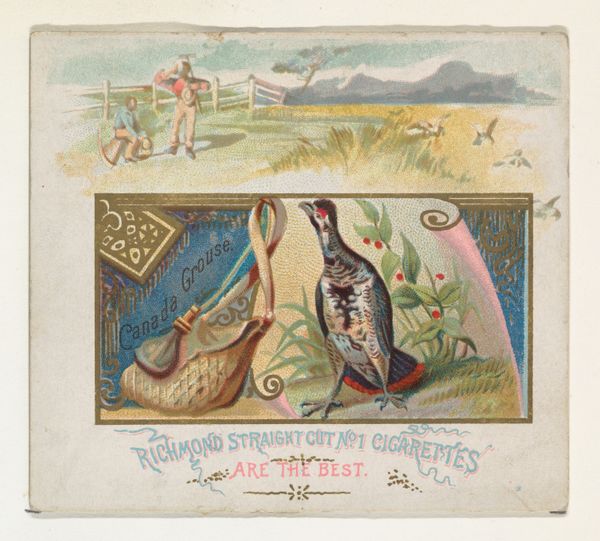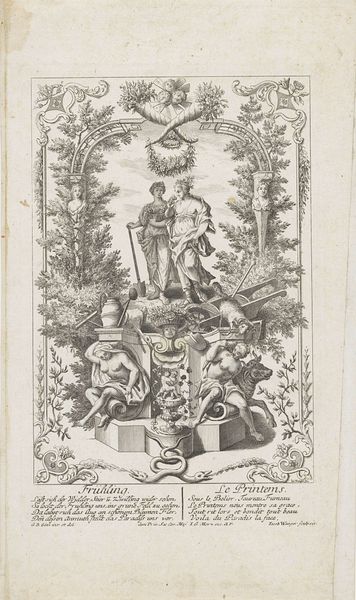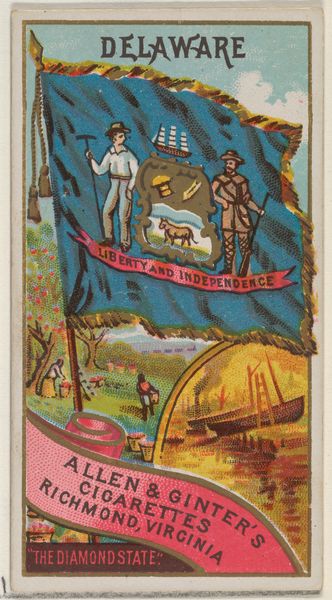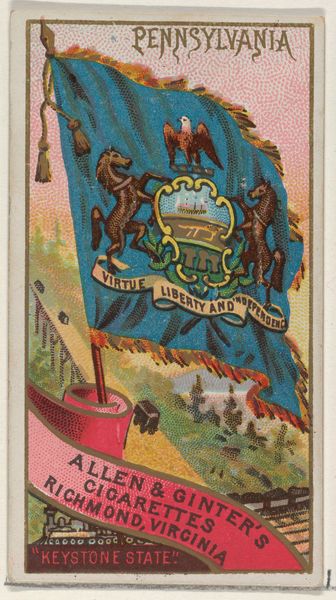
Arms of the State of Vermont, from the Military Series (N224) issued by Kinney Tobacco Company to promote Sweet Caporal Cigarettes 1888
0:00
0:00
drawing, graphic-art, coloured-pencil, print, paper
#
drawing
#
graphic-art
#
coloured-pencil
# print
#
landscape
#
paper
#
coloured pencil
Dimensions: Sheet: 2 3/4 × 1 1/2 in. (7 × 3.8 cm)
Copyright: Public Domain
Editor: Here we have "Arms of the State of Vermont" from 1888, a colored-pencil drawing that’s part of the Military Series by Kinney Tobacco Company. It's quaint. What's striking to me is how this idealized image was mass-produced to sell cigarettes. How do you interpret the intersection of commerce and state symbolism? Curator: It's crucial to recognize the materiality of this piece: it’s not just an image, but a mass-produced object intended to circulate within a consumer economy. The "Arms of the State" become a commodity, distributed alongside Sweet Caporal Cigarettes. Editor: So, it’s less about the art itself and more about its function as a promotional tool? Curator: Precisely! The choice of colored pencil, the printing process – these speak to the accessibility and affordability aimed at a broad audience. This blurring of lines between high art, craft, and advertising prompts a deeper look at the production of such objects and who profited from their circulation. How does its imagery play into consumerism? Editor: The idealized landscape promotes an image of Vermont. It presents a comforting vision of rural life linked to the state's identity...and links it to their brand! Curator: Think about the paper it’s printed on, the ink, the labor involved in its creation and distribution. All these elements reveal a network of social and economic relationships tied to the consumption of both images and tobacco. Does understanding the materials and context alter your initial "quaint" perception? Editor: Absolutely. It feels much more calculated and, frankly, cynical now. I'll definitely be thinking differently about the material realities behind images from now on. Curator: That’s the power of the materialist perspective, urging us to critically examine the hidden stories behind the artwork’s surface.
Comments
No comments
Be the first to comment and join the conversation on the ultimate creative platform.
